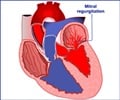Metabolic Syndrome - Diagnosis
One of the visible signs of the Metabolic syndrome is an increased level of waistline fat or having an apple -shaped body.
Defining and diagnosing metabolic syndrome is an ongoing challenge Metabolic Syndrome is identified on the basis of the following factors- :
- Too much waistline fat (also called male-pattern, visceral, or ‘apple-shaped’ adiposity)
- High blood pressure
- High triglyceride levels
- Low levels of ‘good’ cholesterol -HDL
- Diabetes or pre-diabetic conditions (high glucose levels, insulin resistance)
Each of these conditions by itself is a risk factor for heart disease. But together they are much more dangerous than when they occur separately. According to most definitions, if you have any three of these conditions, you qualify for a diagnosis of Metabolic Syndrome.
Two of the conditions—waistline fat and insulin resistance are believed to be among the underlying causes of the “clustering” together of the other conditions. Waistline fat is often associated with
- High blood pressure and
- Insulin resistance.
Insulin resistance, in turn, is associated with
- High glucose levels,
- High triglyceride levels,
- Low HDL (“good”) cholesterol levels, and
- High blood pressure.
Some researchers consider waistline fat to be essential to a diagnosis of Metabolic Syndrome because it is both a risk factor for heart disease in itself and also a likely sign of insulin resistance.
In addition, while the other conditions are all “silent killers”, waistline fat is a visible symptom of an unhealthy metabolism. A large waistline is a danger signal that can prompt doctors to check for the other conditions in time to slow down or even stop the progression of the syndrome.
The following table presents four definitions of Metabolic Syndrome, with cut-off levels for each of the five conditions. Based on these definitions one can diagnose metabolic syndrome. The definitions were proposed by
- The World Health Organization (WHO)
- The European Group for the Study of Insulin Resistance (EGIR)
- The U.S. National Cholesterol Education Program’s Adult Treatment Panel lll (NCEP/ATP lll) and
- The International Diabetes Federation (IDF).
















